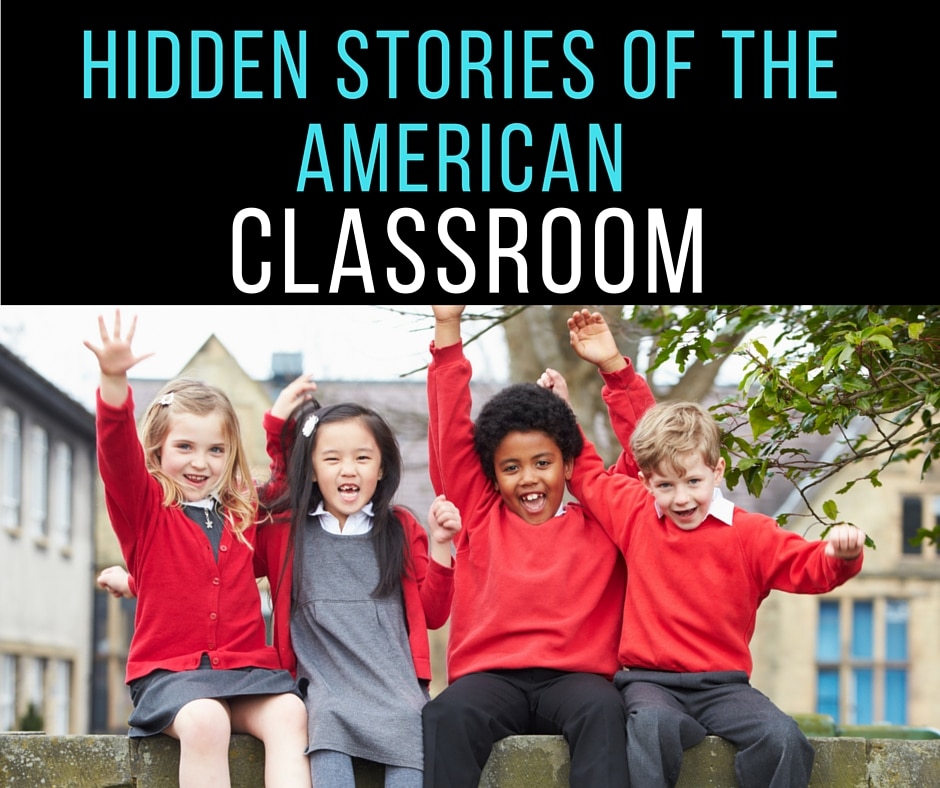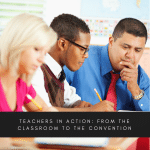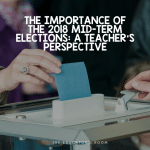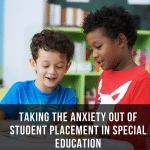I recently attended a professional development presentation on poverty, and one slide that struck me was the structure of the average American classroom. In fact, I cannot stop thinking about it. Doris Baboian (our presenter and Director of Student Services in my district) noted a 2007 joint study by the U.S. Department of Education and the United States Census:
In the average American classroom of 30 students:
–12 of the 30 students would live in poverty-3 would live in “extreme poverty“
–10 of the primary languages spoken would not be English, but would be one of over 350 languages spoken in U.S. schools
–13 of the students would be “ethnically diverse,” with 5 of the students black / African-American, 6 would be Hispanic / Latin-American, and 2 would be Asian-American
–7 of the students will have been physically, sexually, verbally or emotionally abused before turning 18
–6 will have moved at least four times before 3rd Grade
Many educators know that their students (and their personal lives) are mere icebergs of what they know of the student in class, but to think that these numbers exist in the average classroom is infuriating, heart-wrenching, and maybe even motivating.
UPDATE
To update some of these statistics with more recent data, I learned that:
The diversity of our classroom is changing more rapidly. The Huffington Post notes that white students will be a minority by the year 2023 (the largest change, unsurprisingly, is the average classroom will soon have 9 Hispanic / Latin-American students). Education World has noted, with this the increasing amount of English Language Learners (ELL) will change the priorities of schools, while also pointing to some changes that will need to drive teachers to learning about their average student. These aren’t necessarily bad things; they’re just the way things are.
But, also with this change in diversity is a dip in socio-economic status. The Washington Post reports that, for the first time in 50 years, 51% of students are now eligible for free-and-reduced lunch, with Mississippi (and 80% of the population) having the highest rate of low SES students.
In big cities, where the rents are increasing due to young families moving back to the city for jobs and entertainment, the amount of homelessness is rising substantially. The San Francisco Gate reports that Los Angeles and New York account for approximately 20% of all those who are homeless, and that number is rising by approximately 5% in the average city.
Lastly, the amount of child abuse is decreasing. That doesn’t make it easier to learn that, in 2013 alone, the National Children’s Alliance reported that Child Protective Services was used to help 3.1 million children (about 5% of our students), but they were unable to save the lives of the 1,520 who died due to neglect and abuse.
ANALYSIS / WHAT TO DO
In the average American classroom, we teachers first need to remind ourselves of our Educational Psychology class, namely the chapter on Maslow’s Hierarchy of Needs. In summation, self-actualization (learning) cannot be met until the other needs are met. The first involves the basic needs of air, food, shelter, warmth, and sleep. For one (the homeless student) of the students in the average classroom, these are unfulfilled. The second set of needs involves safety. Seven of those students in the average classroom have either faced these deficiencies or continue to face that threat each time they come home. The next two steps involve love, belongingness, and self-esteem, which are becoming trickier things to monitor, handle, and proactively teach in a classroom with so many divergent needs. Last comes self-actualization, where the students are in control and begin to soar.
I note how to deal with many of these issues (called Adverse Childhood Experiences, or ACEs) in a previous article, which you can read here.
We next need to learn how to empathize with our students, realizing that our students’ lives are often more complex than ours was — and thus require more systematic and yet personalized accommodations. These don’t necessarily need to be stapled together on a few sheets of paper, by the way. Sometimes it just involves walking up to a student’s desk and telling them how you’re going to cut them a break. Hopefully you lighten the load or give them a reason to smile a bit more than day.
Third involves crashing through the perpetuation of poverty, which is arguably the most under-discussed problem gripping our students. Kathleen Kelleher of the UCLA Blueprint discussed the issue with John Rogers, a research at the university, who has found the “amount of time teachers spend instructing students” and found that teachers in low SES areas teach 10 less days because of the issues that they have to overcome and learn to deal with in the classroom. It’s no wonder that students and their parents come to tour my school district (a relatively affluent one) while avoiding others at all costs.
Finally, and arguably most important, is placing students on a proverbial rocket through all the adverse garbage in their lives. This, of course, is much easier said than done. However, I can speak from experience — as I was one of those students who sat in class and was low SES, faced abuse, and moved 4 times before third grade. Despite of (and maybe in spite of) all that, I found comfort in school and was able to reach the self-actualization component of learning. This is because my teachers were able to provide much of the love, laughter, and inspiration I needed. Teachers, no doubt, can still do the same today.
CONCLUSION
Baboian stated, “the most difficult part of all of this, is that you can never unknow the things you now know.” Now that you know these statistics, you may be chewing on them for a few days, as I had. May it be the fuel that drives you to positively impact a child’s life tomorrow.







